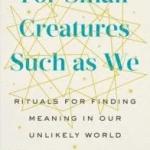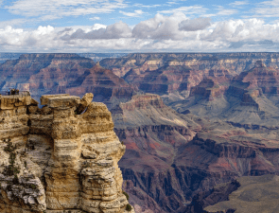
From Flickr
The mind likes patterns. It finds them everywhere. Sometimes these patterns actually exist, and sometimes the mind imposes them where they don’t actually exist, and sometimes the mind simply invents them for the joy of it. The fist of these is a basis for science, the third a basis for art, and the second is a basis for the broad realm of illusions.
It is far easier to remember something that is organized into a pattern than to remember something that is random. Mnemonics takes advantage of this.
Often we need to find a pattern to something in order for it to make sense. The mind also likes things to make sense. This preference for things making sense is probably why the mind sometimes imposes a pattern where one doesn’t really exist.
The minds of earlier peoples also liked things to make sense. Since they didn’t have anything like modern science to guide them, they told stories that purported to make sense of a whole range of phenomena. These stories, these mythological cosmologies, made the world seem more sensible, less alien.
As constellations impose a pattern on random collections of stars, so cosmologies impose a pattern on the world. To impose that pattern, they usually shrink the world to a relatively small size in space and time. And a common feature of such cosmologies is that they give the peoples who create them a central position in the pattern of events that comprise that world.
In his great work The Divine Comedy, Dante articulates a medieval Christian cosmology. It is a detailed description of a world only a few thousand years old and where the farthest reaches of space are closer than we now know the moon to be. It is a world in which the activities of humans, or at least European humans, are of deep concern to a human-like God.
The cosmology of modern science, the origin of which date about 300 years after Dante, rapidly smashed the small, fragile cosmology of medieval Christianity. Rather than shrinking the world, scientific cosmology has consistently expanded its temporal and spatial horizons. Although science reveals underlying patterns to how the Universe has evolved over time, it has refused to give humans any privileged place in that Universe.
The physicist Steven Weinberg wrote: “The more the universe seems comprehensible, the more it also seems pointless.” I can relate to the sentiment, but I don’t find it true. As I have stated in previous posts, when we truly see ourselves as an integral part of the Universe, then the meaning and value we experience in our own lives are part of the Universe. It has brought us forth and sustains us, we creatures that can find value and find meaning in life. Whatever else the Universe is, it is also the original source of that possibility of value and meaning we humans find so important.
In his book, Mind and Nature – A Necessary Unity, Gregory Bateson writes of the “pattern that connects.” This is a mega pattern that connects all life together and life to the physical world. It is the pattern that reveals that we are an integral part of the universe; a pattern that shows that there is no basis for the duality of mind and matter that had been central to Christian mythology.
As stated earlier, we humans sometimes impose patterns where they don’t actually exist. Perhaps that is the case with this ”pattern that connects.” But I think there are good reasons to believe that something like this actually exists. I prefer to call it Tao, but no mere word is adequate to represent it.
The Universe is highly dynamic. Within it all things change ceaselessly. But due to this underlying thing Bateson called “the pattern that connects,” the change is not random, but processional and creational. In this it is something as worthy of reverence as the deities of any earlier cosmology.
__________
Learn about Membership in the Spiritual Naturalist Society
The Spiritual Naturalist Society works to spread awareness of spiritual naturalism as a way of life, develop its thought and practice, and help bring together like-minded practitioners in fellowship.
SNS strives to include diverse voices within the spectrum of naturalistic spirituality. Authors will vary in their opinions, terms, and outlook. The views of no single author therefore necessarily reflect those of all Spiritual Naturalists or of SNS.













